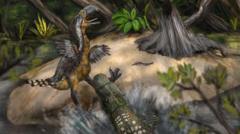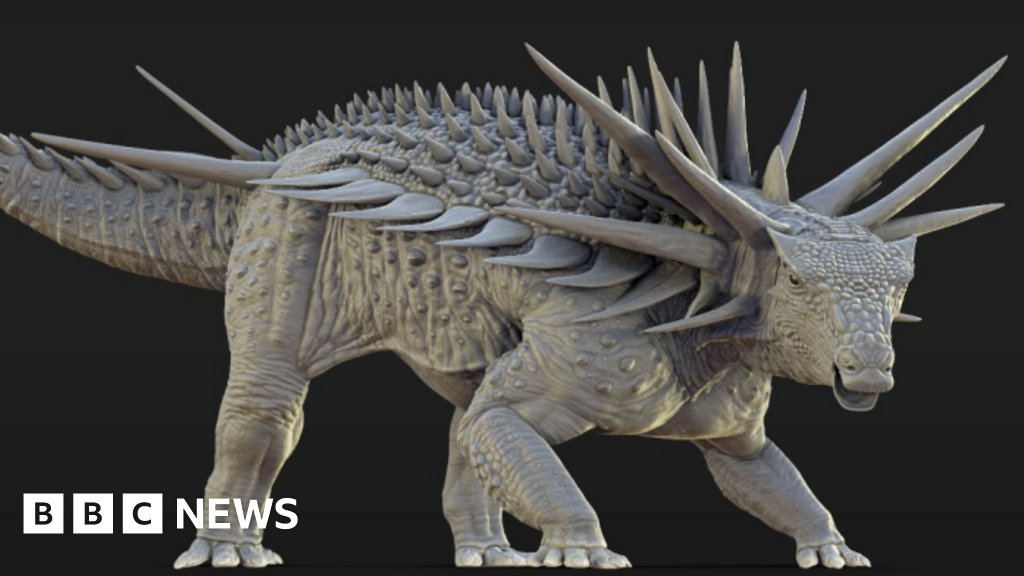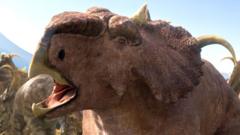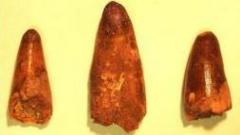The discovery of teeth marks on a fossilized leg bone belonging to a terror bird, a massive avian predator that roamed the earth 13 million years ago, indicates that it may have faced a fatal encounter with an even larger predator, possibly a caiman. Researchers from the Universidad de Los Andes in Bogotá analyzed the tooth impressions on the fossil and believe they might belong to Purussaurus neivensis, an extinct crocodilian species known for its massive size, reaching lengths up to five meters.
The findings were published in the journal Biology Letters, and the study utilized 3D digital scans to meticulously reconstruct the evidence of what is thought to have been a deadly confrontation. The terror bird, towering at around 2.5 meters, was a top predator of its time, utilizing its strong legs and formidable beak to dominate its habitat in the humid swamps of Colombia's Tatacoa Desert.
Discovered over 15 years ago by local fossil collector César Augusto Perdomo, the leg bone's unique characteristics were only recently analyzed in depth. The researchers compared the bite size and pattern to known specimens of crocodilian threats from museum collections, revealing a deep connection between the two ancient creatures.
Lead researcher Andres Link noted the absence of healing signs in the bite marks, leading to the hypothesis that the terror bird likely succumbed during the attack. "This might have been the last day the terror bird was on this planet," said Link, emphasizing the significance of the find.
The Tatacoa Desert's fossil-rich layers date back to the Middle Miocene and contain evidence of ancient ecosystems thriving in a lush environment before transitioning into drier climates. The study adds to our understanding of predatory interactions in prehistoric times, suggesting that even apex predators like the terror bird were vulnerable to larger competitors.
"This insight redefines our understanding of the ancient ecosystem, showing that these ferocious birds faced threats we often overlook," Link concluded. Each fossil piece, he expressed, plays a vital role in unraveling Earth’s historical narrative.
The findings were published in the journal Biology Letters, and the study utilized 3D digital scans to meticulously reconstruct the evidence of what is thought to have been a deadly confrontation. The terror bird, towering at around 2.5 meters, was a top predator of its time, utilizing its strong legs and formidable beak to dominate its habitat in the humid swamps of Colombia's Tatacoa Desert.
Discovered over 15 years ago by local fossil collector César Augusto Perdomo, the leg bone's unique characteristics were only recently analyzed in depth. The researchers compared the bite size and pattern to known specimens of crocodilian threats from museum collections, revealing a deep connection between the two ancient creatures.
Lead researcher Andres Link noted the absence of healing signs in the bite marks, leading to the hypothesis that the terror bird likely succumbed during the attack. "This might have been the last day the terror bird was on this planet," said Link, emphasizing the significance of the find.
The Tatacoa Desert's fossil-rich layers date back to the Middle Miocene and contain evidence of ancient ecosystems thriving in a lush environment before transitioning into drier climates. The study adds to our understanding of predatory interactions in prehistoric times, suggesting that even apex predators like the terror bird were vulnerable to larger competitors.
"This insight redefines our understanding of the ancient ecosystem, showing that these ferocious birds faced threats we often overlook," Link concluded. Each fossil piece, he expressed, plays a vital role in unraveling Earth’s historical narrative.














